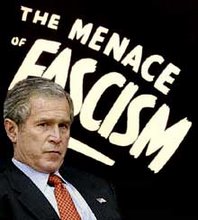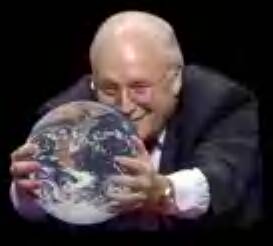Posted on May 18, 2008
 |
| politickernj.com |
By Jon Wiener
“Nixonland”—that’s Rick Perlstein’s term for the political world where candidates win power by mobilizing people’s resentments, anxieties and anger, where politics destroys its victims. Truthdig’s Jon Wiener spoke with Perlstein recently about his new book, “Nixonland: The Rise of a President and the Fracturing of America.”
Jon Wiener: Do we still live in Nixonland?
Rick Perlstein: Yes, we do. I don’t mean that the political anxieties and passions today are as great as they were in the late ’60s. But the way Richard Nixon used the ’60s to define the ideological contours of American politics is still with us. On right-wing radio today, they keep talking about how snobby and elitist the liberals are—just like Richard Nixon did.
Wiener: You are suggesting there was a time when the Republican Party did not win power by mobilizing resentment and anger.
Perlstein: In 1960, there was a strange creature called the liberal Republican. When Richard Nixon ran for president in 1960, his platform wasn’t all that different from Kennedy’s.
Wiener: A key turning point in the history of Nixonland is the invention of the “hardhat” as a political figure, which coincided with the rise of the flag as a partisan political symbol. We can identify that moment precisely: the riots on Wall Street following the Kent State killings in 1970.
Perlstein: On May 8, 1970, anti-war students rallied at the statue of George Washington in Lower Manhattan to protest the war and the Kent State killings. Then 200 construction workers from the area marched in on their lunch break, wearing hard hats and carrying the American flags that topped off building sites. They complained to the cops that flags were not flying at Federal Hall. The reason, in fact, was that it was a drizzly day, and the flag is not allowed to be flown in the rain. But they decided that the kids had taken down the flag, and started beating the protesters. Crowds of people from Wall Street cheered them on.
Wiener: Nixon saw the hardhats on TV, like everyone else.
Perlstein: Nixon called a leader of the New York building trades union, Peter Brennan, and invited him to the White House, where Nixon put on a ceremonial hard hat. Eventually he made Brennan his secretary of labor. This is the beginning of the strategy where Republicans appeal to blue-collar whites by playing to their cultural grievances, their anger and their so-called patriotism. The Democratic Party, enemy of the working man: that was one of the most important turning points in American political history.
Wiener: Nixon had been slow in realizing the political opportunities that were opening up in the mid-’60s.
Perlstein: Nixon went to school on Ronald Reagan’s 1966 gubernatorial campaign, which mobilized white resentment after the Watts riots and hostility to student protest at Berkeley. Nixon thought of himself as a master of American politics, and yet this actor, this neophyte, got elected governor of California after Nixon had lost his campaign for the same office.
Wiener: In 1968, George Wallace ran on some of the same issues as Nixon, but he proposed different solutions.
Perlstein: Wallace would say that if protesters laid down in front of his limousine, the way they were lying down in front of Nixon’s and Humphrey’s, “that would be the last day they would ever lie down in front of a limousine.” He would get a standing ovation for fantasizing about murdering protesters. Nixon instead used code words: “states’ rights” in the South, “law and order” in the North.
Wiener: 1968 was an unbelievably close election: Nixon got 43.4 percent, Humphrey 42.7, Wallace 13. Nixon did only a little better than Goldwater had done four years earlier in a historic defeat. Why was 1968 virtually a tie between Humphrey and Nixon?
Perlstein: Kevin Phillips at that point said if you want to know the future of the Republican Party, of what he called “the emerging Republican majority,” you add Nixon’s votes and Wallace’s votes together. They added up to a landslide against liberalism. And in 1972, [H.R.] Haldeman’s diaries show, they basically paid off Wallace to run in the Democratic primaries instead of as an independent. And in 1972 Nixon got about the same number of votes that he and Wallace got together in 1968.
Wiener: When will we leave Nixonland?
Perlstein: All I can say is it hasn’t ended yet.
Listen to audio of the full interview in mp3 or podcast format.
(In accordance with Title 17 U.S.C. Section 107, this material is distributed without profit to those who have expressed a prior interest in receiving the included information for research and educational purposes. I.U. has no affiliation whatsoever with the originator of this article nor is I.U endorsed or sponsored by the originator.)
The Nazis, Fascists and Communists were political parties before they became enemies of liberty and mass murderers.




No comments:
Post a Comment